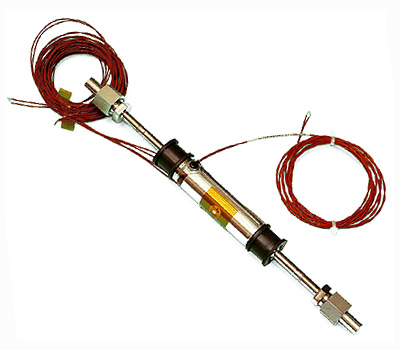
Shape Memory Alloy Valve
Description
The shape memory alloy valve is a one-shot normally closed device that functions like a pyro valve, but without the pyrotechnic charge. The shape memory alloy component is initially compressed into a closed-valve state. Upon heating, the alloy returns to its original shape causing the valve to remain permanently open.
The valve incorporates a redundant heater, heater harness, a thermal indicator, an all EB welded housing with ¼" titanium inlet and outlet tubes and attachment interface clamps. Elastomeric sleeves at each of the two attachment interfaces isolates thermal loads between the valve and spacecraft structure via the attachment clamps.
Prior to activation, the complete valve is hermetically sealed like a pyro valve. The actuator has a nearly unlimited lifetime.
Typical Applications
The shape memory alloy valve is designed for electrical and chemical propulsion systems where a reliable, robust, cost effective and robust device is needed for the permanent opening of a propellant or pressurant line.
The valve is used on the Heinrich Hertz communications satellite to passivate the bi-propellant propulsion system at the end of mission life. As a normally closed passivation valve, it is activated whilst the satellite is still under control to safely vent the propellant tanks to the vacuum of space. Such passivation measures help to avoid potential sources of explosion and resulting orbital debris.
The Heinrich Hertz propulsion system comprises a 400N apogee kick motor and 12 x 10N thrusters. Using bipropellant tanks supplied by the ArianeGroup's Bremen division, The Lampoldshausen Orbital Propulsion Centre is responsible for the design, development, production, testing and integration of the complete propulsion system.
Heinrich Hertz will be placed into a geostationary orbit toward the end of 2021 aboard Ariane 5.
Advantages of the shape
memory alloy valve include:
- No life limited pyrotechnic charge.
- Solid state / metallic actuator, no chemical energy carrier.
- No pyrotechnic shock event.
- No handling & transport constraints, as with pyrotechnic hardware.
- No pyrotechnic combustion gases that could potentially leak into flow path.
- Simple electrical activation reducing system cost (No pyro driver electronics needed).
- Insensitive to spurious signal induction and electrostatic discharge.




